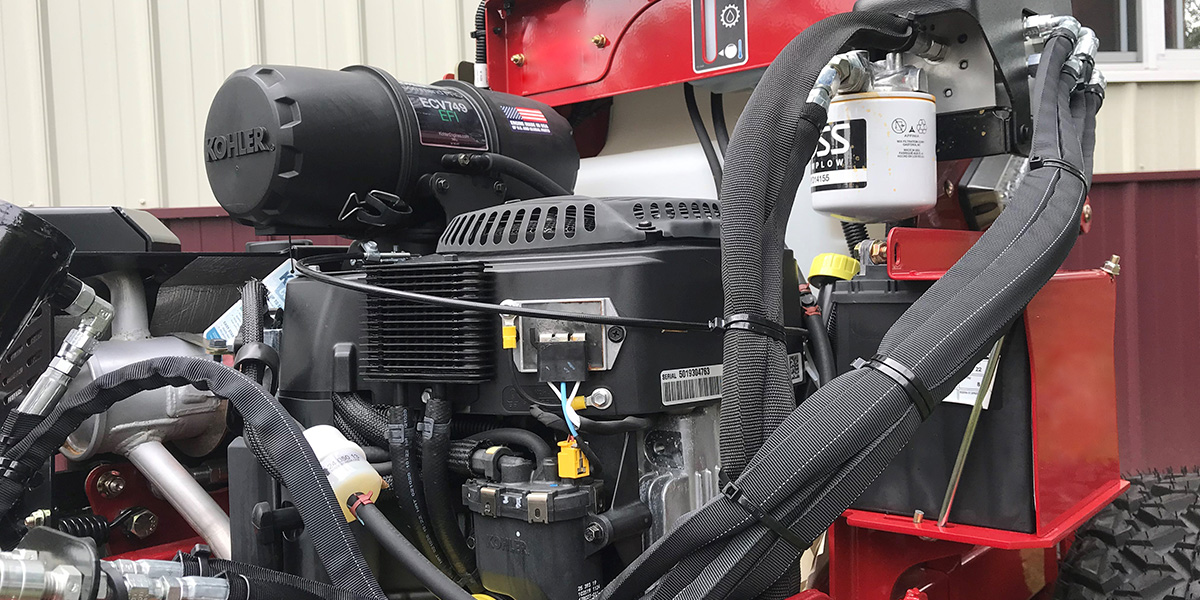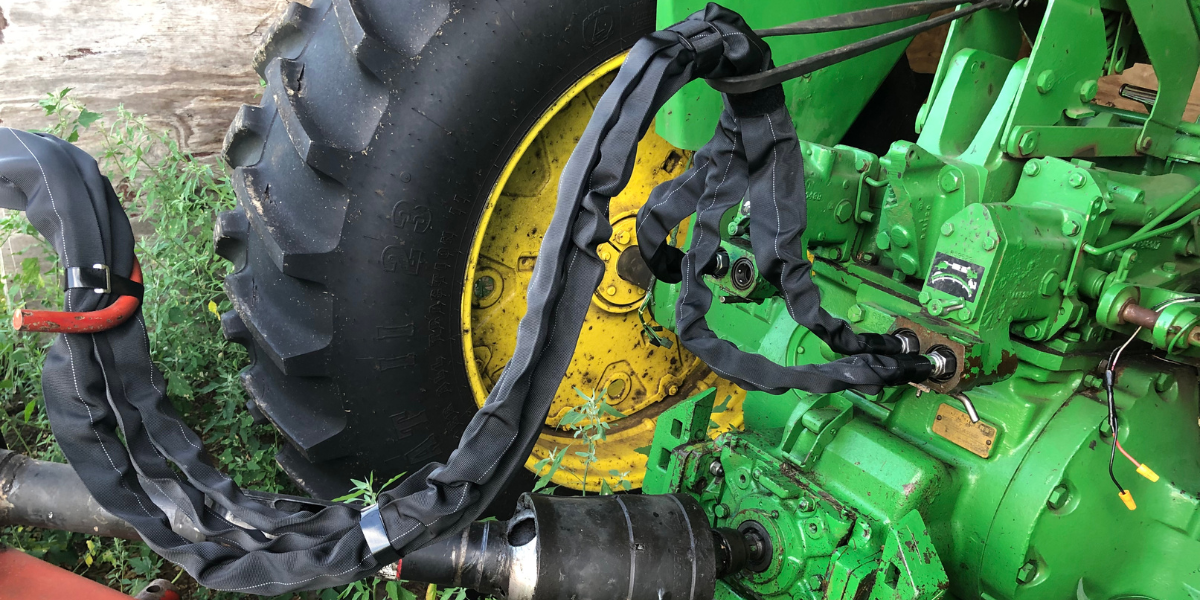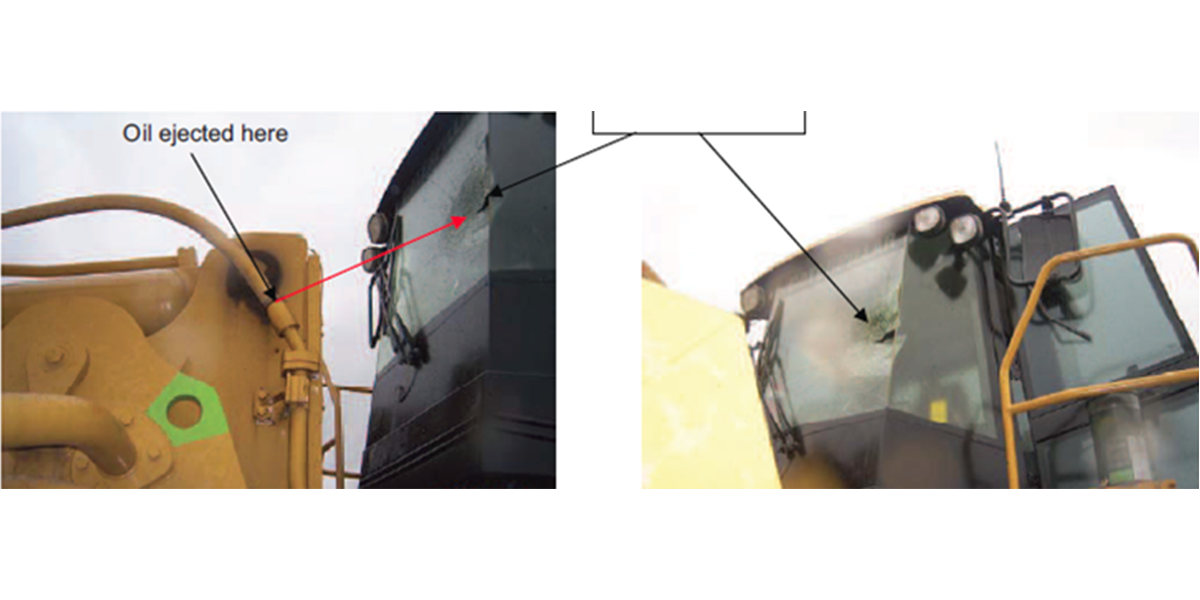3 min read
The Cost of Hydraulic Hose Protection and Employee Safety
Python Covers Team
:
Feb 6, 2023 10:47:30 AM

From severe injuries and damaged equipment, to downtime and expensive repairs, there are many risks of fluid leaks from unprotected hoses. Utilizing proper safety equipment, such as protective hose sleeves, eliminate the risk of pinhole or burst hydraulic hoses.
Here are some of the most important things to know about hose bursts, how to prevent them, and how to protect workers:
- Potential Issues with Hydraulic Hoses
- How Hydraulic Fluid Can Cause Serious Injuries
- What Happens When a Hydraulic Hose Fails?
- Safety Measures for Employee & Hydraulic Hose Protection
- Protect Employees & Your Investment with the Right Hose Sleeve
Potential Issues With Hydraulic Hoses
Hydraulic hoses regularly face high pressure and temperatures during everyday operation.
Due to this consistent exposure, a variety of issues can arise, including:
-
Hose erosion: This occurs over time when the hose is exposed to harsh ambient conditions.
-
Abrasion: Hoses expand and contract while resting against the machine, which causes rubbing and leads to deterioration of the hose. Incorrect hose routing is another common cause and can contribute to abrasion.
-
Hose failure due to improper assembly: Under-crimping, over-crimping, and low crimping engagement are contributors to incidents involving hydraulic hoses.
-
Pinhole leaks: More dangerous than a wide crack in the hose, pinhole leaks allow hot, pressurized fluid to be propelled from the hose. This type of leak is hard to detect and can lead to serious injury.
-
Bursts: A more dramatic loss of fluid than a pinhole leak, a burst can cause serious injury to workers and can mean downtime on a job site.

How Hydraulic Fluid Can Cause Serious Injuries
Hydraulic leaks occur at very high pressure, so anyone attempting to find the source of the leak can be exposed to high-pressure fluids that can cause significant injury. Injection injuries due to pinhole leaks are a hidden danger, as the initial contact may not seem significant. However, the longer the period between the incident and treatment, the more severe the consequences of a hydraulic fluid injury.
Fluid entering the body begins to kill tissue and gangrene can set in if these injuries are not promptly treated. Blood poisoning and/or bacterial infection can also occur as a result of exposure to fluid from a hydraulic line.

Fluid can penetrate the skin at as low as 100psi and fluid velocity from a pinhole leak can be close to the muzzle velocity of a rifle at 600ft/s. Skin penetration can occur as far away as four inches from the fluid source. In worst-case scenarios, death is also possible.
Without prompt treatment, the injured person could lose a finger or an arm due to what started out as a slight stinging sensation – or they could lose their life. According to the National Safety Council, the manufacturing industry had 300 fatalities that were preventable in 2020 and 363 in 2022.
In addition to the tragedy of a life lost, there are business losses you’ll accrue if proper measures are not in place. The protection of employee safety significantly outweighs the cost of the protective measures.
What Happens When a Hydraulic Hose Fails?
The consequences of a pinhole leak or burst can start with one issue and balloon into several. Any or all of the following can occur:
-
Potential damage to machinery
-
Possible death for nearby workers
-
Unexpected downtime
-
Shorter life expectancy for machines involved
-
Cleanup and environmental impact
-
Failure to meet chemical resistance requirements in the oil field
-
Need for re-evaluation of line-of-sight safety measure

Safety Measures for Employee & Hydraulic Hose Protection
The acquisition of reliable safety equipment will make a difference in eliminating the risk of a pinhole leak during operation. Taking proactive measures to prepare those who work with hydraulic equipment is also a worthwhile investment:
- Make sure each new employee understands the risks and the best way to wear their safety equipment. They also should know what to do in case of an emergency.
- Leak prevention efforts are a proactive way to protect employees and your investment in a project, as is regular maintenance. These tasks, when added to your to-do list on a regular basis, cut down on unexpected failures of the line.
- Always use high-quality parts to reduce the risk of a leak. In addition to the right hose fittings, a hose sleeve provides reliable protection to reduce pinhole leaks and bursts. It also provides reassurance that the spray will be curtailed if an incident occurs – helping those nearby avoid injury.
Protect Employees & Your Investment With the Right Hose Sleeve
The cost of injury or permanent disability of an employee, along with the stress of downtime on a project with a tight deadline, is too high to ignore. Instead, it is the incentive to get things moving to budget in the expense for protective sleeves. Peace of mind is provided at no additional cost.
Hydraulic hose sleeves, like Python’s Diamondback tubular sleeve, can ensure operator safety by eliminating the risk of pinhole leaks and bursts. Built to withstand abrasion and high pressure, Diamondback sleeve is an economical choice to protect operators and equipment.
Progress requires interaction; consult with a hydraulic hose expert on the best sleeve for your project environment.


